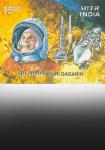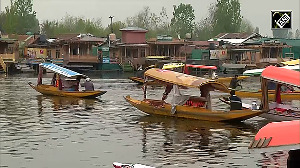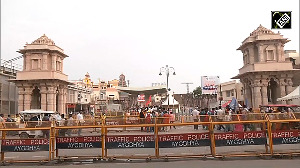How does driving down from India to Bangkok sound? Perhaps with a detour to Angkor Vat? A handful of corporate sponsors, adventure-minded businessmen and sportsmen seem to think it's a great idea and have set out from Kolkata on just such a trip.
The idea is, of course, driven by the urge for commercial and cultural exchange. South-east Asia and the eastern provinces of China pose a queer riddle for Indian trade.
It is a booming region close to our borders but yet too far for substantial exchange. That is because communication is limited to contact by air and sea. The former is too costly and the latter too cumbersome and far away from inland centres.
The solution to this riddle is a road link, which will revive the grand old Stilwell Road that won the war for the Allies against Japan. This was by carting entire army and all their supplies from India to beat the Japanese in their own backyard. If the road could have carried an army to its victory, its potential for commerce is understandably huge.
A road survey team left Kolkata a few weeks ago to chart out the route for what is being labelled the "India-Asean Motor Car Rally". The route is estimated to be around 5,023 km long and would truly demonstrate India's geographical contiguity to the Asean members. Prime Minister Atal Bihari Vajpayee had mentioned such a link at the second Asean-India Summit.
The rally, to be held in November 2004, will be flagged off from Imphal and terminate at Bangkok in Thailand. About 100 people are expected to take part in the rally.
The route is interesting because it is viable, the sponsors point out. Vehicles can today travel to Mandalay in Myanmar for a night halt. Existing roads permit them to go via Taunggyi and Kyiang Tong in Myanmar to Thailand's Phitsanulok in the next 24 hours, and then on to Vientiane and Seno in Laos in 3 days. Marine cargo takes 5 days or more to reach there today.
Connecting roads provide access to Vietnam where the night halt is at Da Nang, followed by Ninh Hoa and Bien Hoa. Another 24 hours towards Phnom Penh and you are within 24 hours of Angkor Vat. Connect the two arches defined by the routes mentioned above and you end up in the Thai capital.
Sadly, such travel is not permitted today, and the purpose of the pilot team is to establish its viability so that India and the Asean can discuss its opening up as an India-Asean project.
From the Indian side, the external affairs ministry and the Confederation of Indian Industry are the organisers, while the Federation of Motor Sports Club of India is the technical manager for the rally. Can this serve to open the eyes of the political powers-that-be in India and the Asean?
"This exchange will lead to commercial interest in infrastructure along the route, promotion of tourism and an overall long-term impact on economic cooperation in the Asean region," said a senior CII member.
Meant to be a unique event to mark the growing trade and investment ties in the region, the idea has reportedly received enthusiastic support from many Asean leaders.
Officials from the organising committee said they were in touch with all the member countries and the Asean Secretariat through the Indian missions in these countries. "We have received enthusiastic response and interest from all the countries," the official said.
The India-Asean road link will be taken up by a committee of industry and business representatives with CII's counterparts in the Asean and the Asean Secretariat. It will be set up shortly to provide overall direction to the rally for starters, and building up from there.
"Keeping in mind India's 'look east policy', India and the Asean members have moved closer in the last few years. The process of economic growth and integration in east Asia and India has been rapid as it has been led by the private sector. India has steadily grown in importance to the Asean and is now a full dialogue partner. It is now taking steady steps to realise the full potential of deeper ties with Asean," said the official.
Building linkages between India and Asean members will help develop concrete benefits since several synergies already exist -- lower transport cost and shorter delivery schedules for Indian exporters because of geographical proximity. Growing Indian investment in the region can further spur and motivate links between companies and people on both sides.
According to statistics, over 90 per cent of India's trade with the Asean member states is focused on five countries -- Malaysia, Singapore, Thailand, Philippines and Indonesia. Therefore, the other five Asean states -- Brunei, Vietnam, Laos, Myanmar and Cambodia -- stand to benefit from accessing the Indian market.
This will also enable them to selectively provide access to Indian goods and services in their own market so that they can benefit from what India has to offer.
Trade balance between India and Asean however is in favour of the latter -- therefore the opportunity for diversification of trade in new areas and new products is enormous.
A study suggests that the level of investment flow from both sides could be around $1 billion by 2007. In any situation, that's a figure no country can afford to ignore.






 © 2025
© 2025